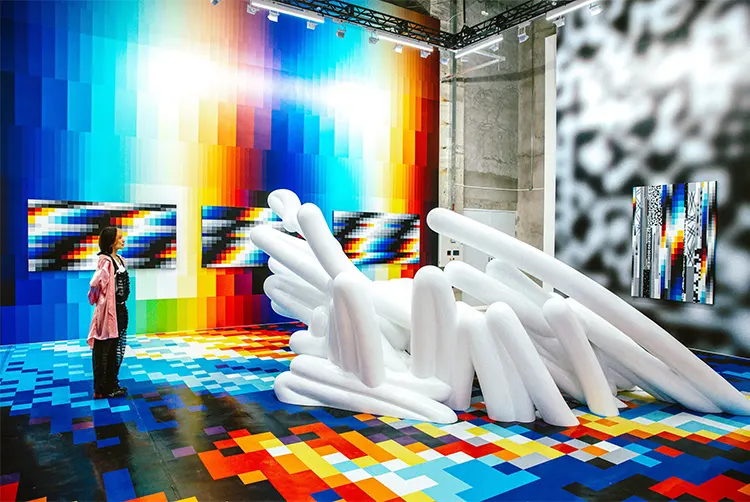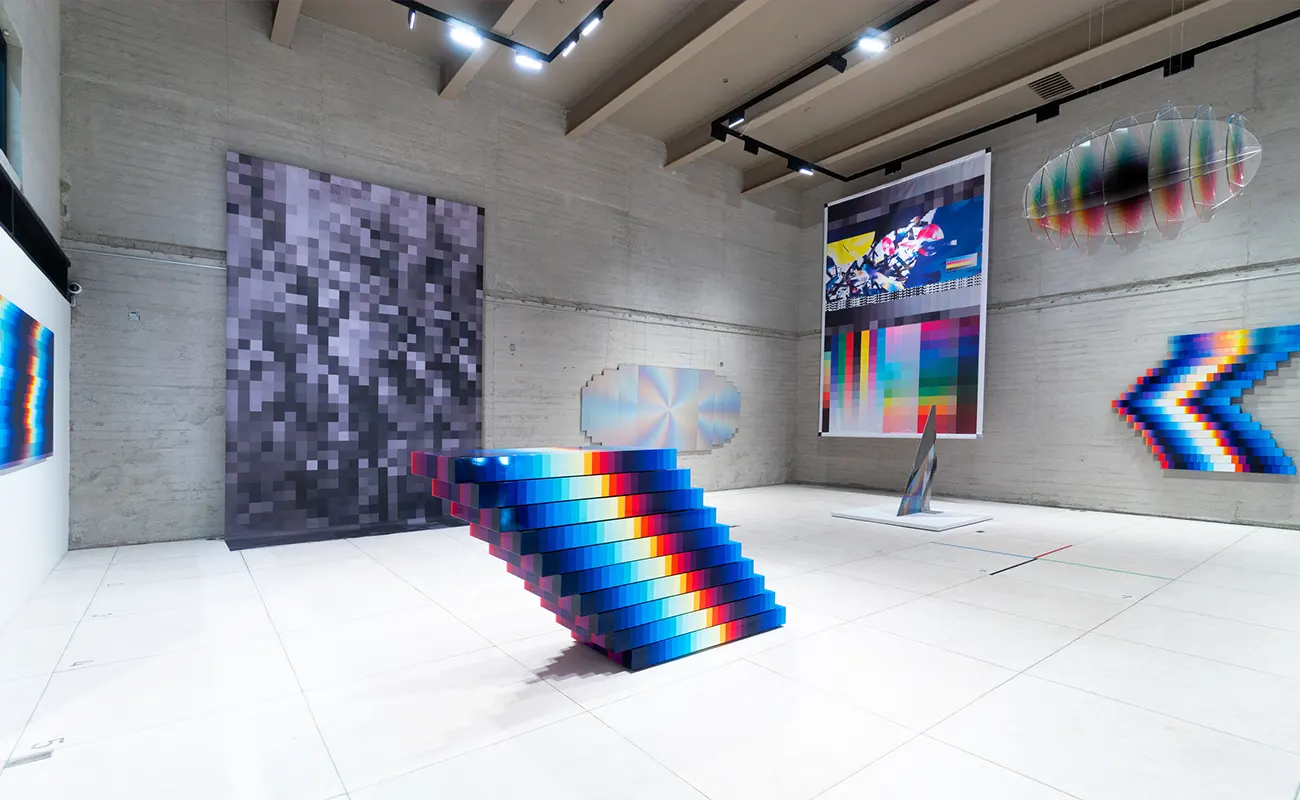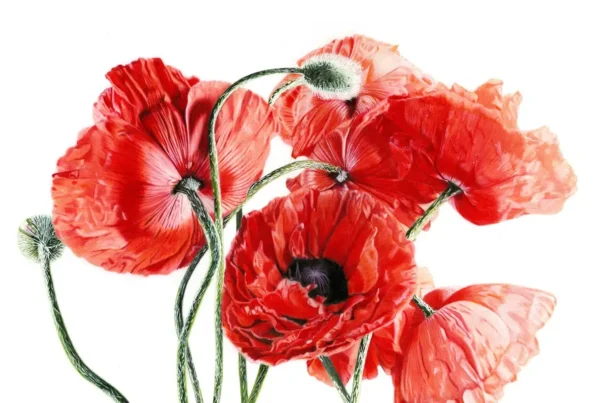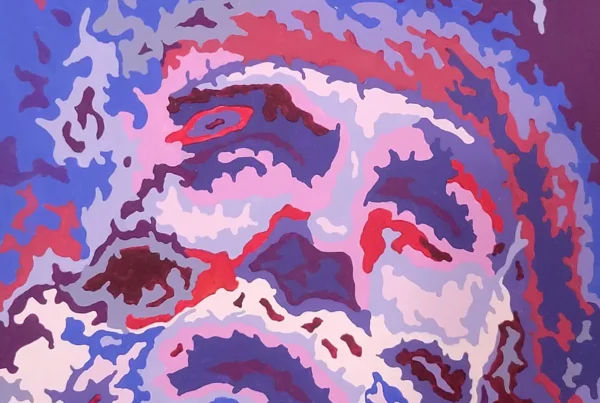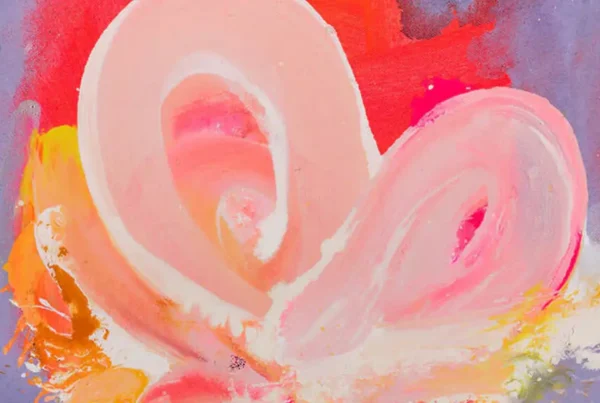Felipe Pantone: A Journey from Graffiti to Global Galleries
Felipe Pantone‘s story is a fascinating odyssey that traces the trajectory from a young graffiti artist in Spain to a globally recognized name in contemporary art. Born in Buenos Aires, Argentina, in 1986, Pantone moved to Spain during his childhood, a transition that played a pivotal role in shaping his artistic journey. The vibrant street art scene of southeast Spain captured his imagination at the tender age of 12, laying the groundwork for his unique blend of analog and digital techniques. This early exposure to graffiti not only honed his skills in public art but also instilled a sense of rebellion and freedom that would later characterize his work. The artist’s formative years were marked by an incessant quest for a unique visual language, one that could encapsulate the kinetic energy and digital vibrancy of the modern age.
The evolution of Pantone’s artistry is a testament to his relentless experimentation and deep engagement with the digital revolution. His work is a dialogue between the physical and digital worlds, capturing the essence of speed, technology, and the omnipresent digital environment. Through the incorporation of digital elements such as pixelation and chromatic aberrations into murals, installations, and canvases, Pantone creates a distinctive visual language. This language is not just dynamic and engaging but also reflective of the fast-paced changes of the digital age. The artist’s ability to blend these elements seamlessly has not only defined his style but has also positioned him at the forefront of contemporary art, bridging the gap between traditional artistic expressions and the digital future.

Innovating Visual Language: The Essence of Pantone’s Art
Felipe Pantone’s artistic vocabulary is as revolutionary as it is reflective, drawing heavily on the influences of the kinetic art movement and the digital revolution. Inspired by pioneers like Victor Vasarely and Carlos Cruz-Diez, Pantone’s work is deeply rooted in the exploration of movement, color, and the viewer’s perception. These influences are evident in his vibrant compositions and intricate designs that seem to pulsate with life. By integrating themes related to the digital age, such as glitches and rapid technological advancements, Pantone not only pays homage to his predecessors but also carves out a niche for himself. His art transcends mere aesthetic delight, inviting viewers to ponder the dynamism and transformation of our era. The unique visual language he has developed speaks to the core of our digitized existence, making his work not just a spectacle but a profound commentary on the times we live in.
The international acclaim Felipe Pantone enjoys today is a reflection of his art’s universal appeal and its ability to resonate across cultural and geographic boundaries. Exhibiting his work from the Mesa Contemporary Arts Center to the Long Beach Museum of Art and beyond, Pantone has cemented his place in the global art scene. This widespread recognition is not just a personal achievement for the artist but a testament to the universal language of art and its power to connect diverse audiences. Pantone’s international exhibitions serve as a platform for sharing his visionary take on the digital age, fostering a dialogue with viewers from all walks of life. His ability to engage with such a wide audience underscores the relevance and accessibility of his work, making Felipe Pantone a true ambassador of contemporary art on the global stage.
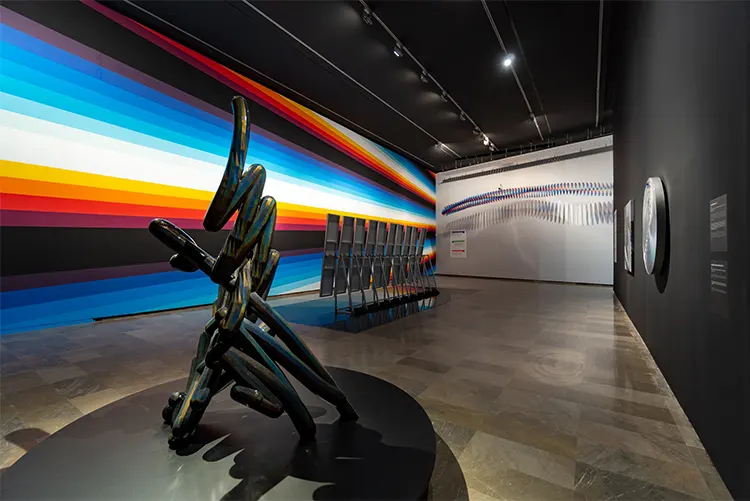
Felipe Pantone: Collaborations and the Art of Accessibility
Felipe Pantone’s ventures into collaborations with brands, musicians, and unique projects like the transformation of a 1994 Chevrolet Corvette highlight his innovative approach to making art accessible. These collaborations are a testament to Pantone’s vision of extending the reach of his art beyond the confines of traditional galleries and museums. By infusing his signature style into everyday objects and experiences, he bridges the gap between the art world and the public sphere. Such endeavors not only democratize art but also introduce Pantone’s distinctive visual language to audiences who might not otherwise engage with contemporary art. This strategic mingling of high art with popular culture underscores Pantone’s commitment to engaging with a broader audience, challenging the conventional boundaries of art consumption and appreciation.
The “ULTRA” series, a captivating exploration of color, light, and viewer perspective, exemplifies Pantone’s dedication to creating dynamic interactions between his artworks and their spectators. By designing pieces that alter their appearance based on the viewer’s position, Pantone invites an active engagement, transforming viewers into participants. This interactivity is a hallmark of Pantone’s work, reflecting his interest in how art is perceived in a constantly shifting digital landscape. The “ULTRA” series, with its illusion of movement and depth, encourages audiences to explore the physical space around the art, fostering a personal connection that is both sensory and contemplative. Through this series and similar projects, Pantone challenges static notions of art viewing, offering instead a vibrant, engaging experience that mirrors the fluidity and complexity of the digital age.
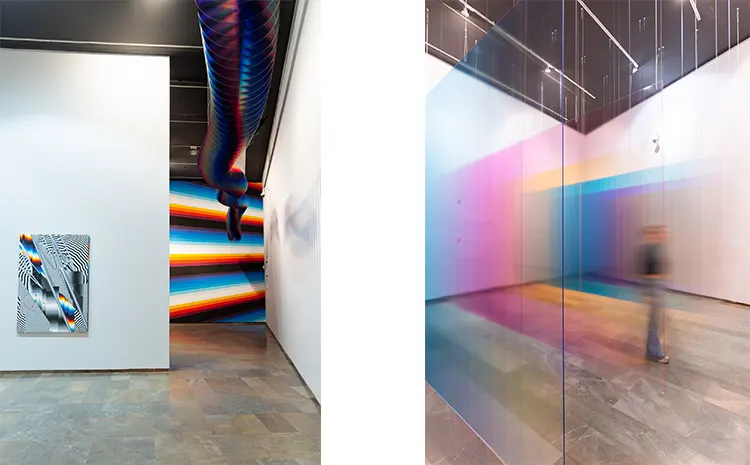
Felipe Pantone: Reflecting on Technology and Environmental Consciousness
The themes of environmental consciousness and the impact of technology are recurrent in Felipe Pantone’s work, underscoring his commitment to addressing contemporary issues through his art. As we navigate the digital revolution, Pantone uses his platform to provoke thought on the sustainability of our technological advancements and their ecological footprints. His artworks serve as a visual commentary on the balance between embracing the future and preserving our environment, sparking crucial conversations about our relationship with technology and nature. This reflective aspect of Pantone’s work highlights his role not just as an artist but as a conscientious observer of modern life, using his art to illuminate pressing global challenges.
Pantone’s contemplation on the ways we consume visual information in the digital age is another critical facet of his work. In an era dominated by screens and digital media, his art examines the saturation of visual stimuli and its effects on perception. Through his innovative use of light, color, and movement, Pantone explores the essence of visual art against the backdrop of modern technology and lighting. This investigation is not merely aesthetic but deeply philosophical, questioning the impact of digital media on our visual culture and cognitive processes. By doing so, Pantone positions his work at the intersection of art, technology, and society, offering a meditation on the complexities of visual consumption in the 21st century.
As Felipe Pantone continues to push the boundaries of visual art, his upcoming projects and exhibitions promise to further explore these themes and techniques. With each new endeavor, Pantone invites us to reimagine the possibilities of art in the digital era, challenging us to engage with his creations not just as observers but as active participants in a constantly evolving visual dialogue. His work remains a beacon for the future of art, blending innovation with introspection in a way that resonates with a diverse, global audience.
